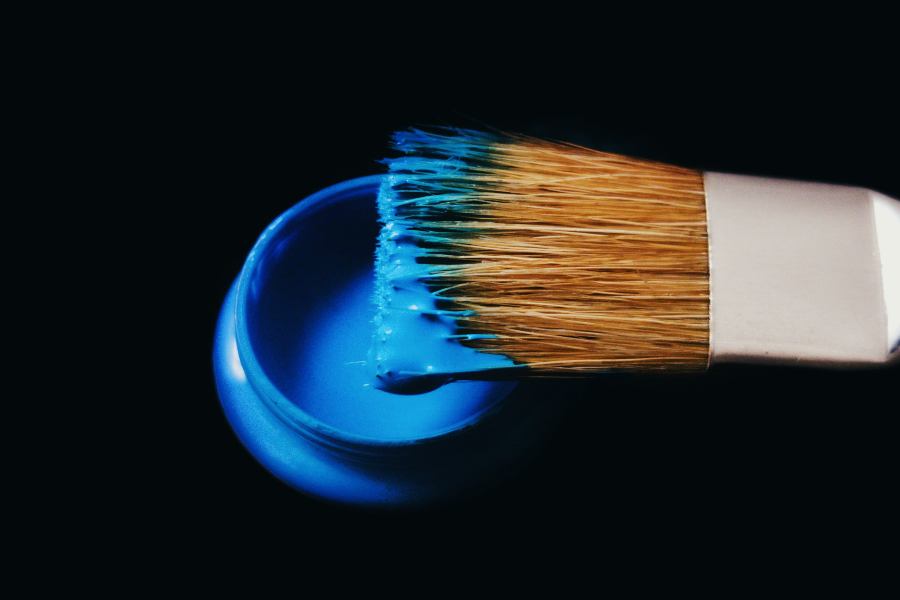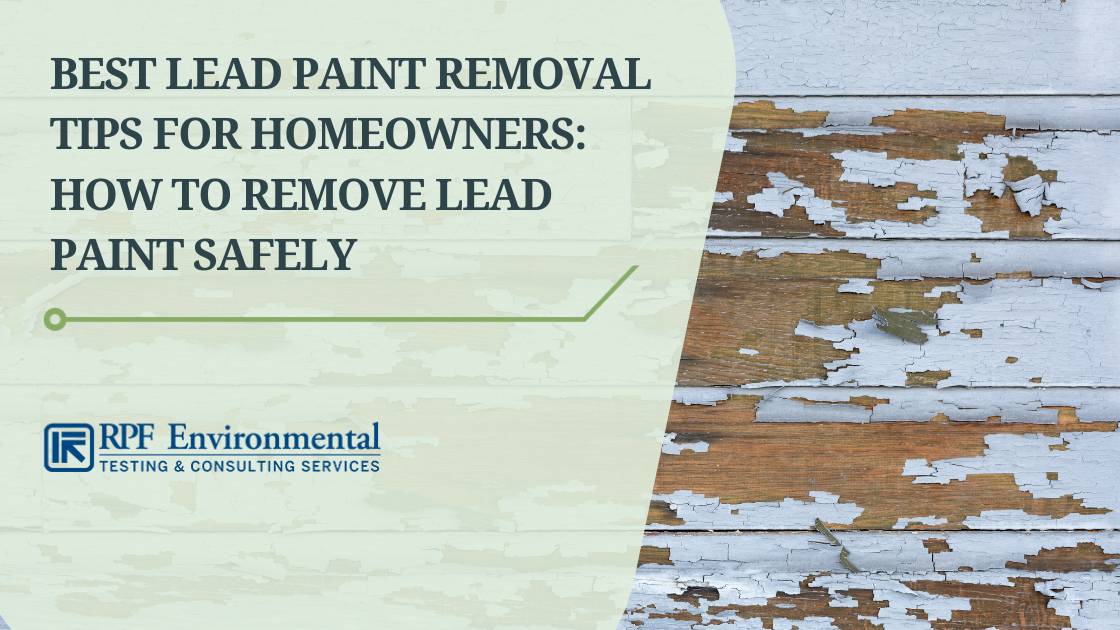
Yes, you can paint over lead paint, but proper safety precautions must be taken. Encapsulation is the safest method for this task.
Encountering lead paint in an older home is a common issue that homeowners face, especially in dwellings built before 1978 when the use of lead-based paint was banned in residential properties. Tackling lead paint requires a cautious approach to prevent disturbing the paint and causing lead particles to become airborne, which can pose severe health risks.
Encapsulation involves applying a specialized coating over the lead paint to seal in the hazardous material, thus avoiding the risks associated with lead paint removal. Before attempting to paint over lead paint, it’s essential to conduct a thorough evaluation of the painted surfaces to ensure they are stable enough to encapsulate. Homeowners should either hire professionals or carefully follow EPA guidelines if they choose to manage the task themselves, ensuring that they wear appropriate protective gear and use the correct types of coatings designed for lead paint encapsulation.
The Risks Of Lead Paint In Vintage Homes
Imagine moving into a charming vintage home. The allure of history is strong, but an unwelcome guest may linger beneath layers of old paint: lead. Homes built before 1978 might harbor lead paint, posing serious health risks, especially to children and pregnant women.
Why Lead Paint Is A Concern
Lead paint becomes a hazard when it chips, turns into dust, or when renovating. When ingested or inhaled, lead can cause severe health issues. It affects the nervous system, leading to cognitive impairments, and can damage organs. The risk is greatest for young kids who tend to put things in their mouths.
Identifying Lead Paint In Your Home
Detecting lead paint isn’t always straightforward. Watch for peeling or chipping areas. Older homes with multilayered paint jobs need particular scrutiny. You can use a lead test kit from a hardware store or hire a professional inspector. Here’s a quick guide:
- Inspect areas where paint is deteriorating
- Look for unusual paint textures like alligatoring
- Test suspicious areas with a kit or professional help
Lead paint can be a hidden threat in vintage homes. Always prioritize safety and consult experts when dealing with potential lead paint. Understanding these risks and steps for identification can protect your family and preserve the charm of your classic dwelling.

Credit: jselabs.com
Legal And Health Considerations Before Renovation
When planning a home renovation, brushing up on legal and health considerations is crucial. If your house predates 1978, lead paint might be a hidden culprit on walls, windows, and doors. Before brushing new life into an old home, understand the rules and risks tied to lead paint.
Regulations On Lead Paint
Lead paint is serious business. Laws exist that demand safe handling and removal. Before starting a renovation:
- Check local regulations. They can vary by city and state.
- Hire certified professionals for inspection and removal. DIY can be illegal.
- Handle with care. Improper techniques spread lead dust.
Health Implications Of Exposure
Lead paint poses significant health risks, especially to kids and pregnant women:
| Affected Group | Risks |
|---|---|
| Children | Learning issues, behavior problems |
| Adults | High blood pressure, muscle pain |
| Pregnant Women | Risk of miscarriage, developmental issues in baby |
Reduce risks with these steps:
- Test your home for lead paint residue.
- Use protective gear like masks and gloves.
- Keep living areas clean from dust and paint chips.
Pre-renovation Safety Measures
Working on a house with lead paint requires safety first. Lead is toxic. It harms both kids and adults. Proper steps before renovation protect everyone. Follow safe practices to avoid lead exposure.
Assessing The Extent Of Lead Paint
Know what you’re dealing with. It starts with identifying where lead paint is. Homes built before 1978 likely contain lead paint. Use lead testing kits from hardware stores. Or, hire a lead inspector. These measures will show where lead paint is and how much.
- Check each room for lead paint.
- Look for peeling or chipping areas.
- Document all lead paint locations.
Hiring Qualified Professionals
Don’t face lead paint alone. Professional help is key. Experts in lead removal keep you safe. They know how to handle lead paint properly. Look for certified lead abatement contractors. They will have the right tools and training.
| Qualifications | Why Important? |
|---|---|
| Certified in lead abatement | Ensures proper lead handling |
| Experience with similar projects | Returns safe, lead-free spaces |
Contact your local health department. They can recommend qualified professionals. Check their reviews. Choose one that has a strong safety record.
Remember:
- Only hire certified professionals.
- Verify their past project success.
- Ask about their safety measures.
Methods To Safely Paint Over Lead Paint
Dealing with old lead paint is tricky. Discovering methods to safely cover lead paint can protect your family and enhance your home. This is your guide to painting over lead paint safely.
Using Encapsulation Products
Encapsulation forms a barrier between the lead paint and your environment. Choose the right encapsulation product for a successful paint-over job. Here’s how:
- Pick encapsulants designed for lead paint.
- Ensure the surface is clean and dry.
- Apply the encapsulant according to the manufacturer’s instructions.
Keep in mind, not all surfaces are suitable for this method. Encapsulation works best on stable, non-friction surfaces.
Preparing The Area For Painting
Proper preparation guarantees safety and quality. To prepare your space:
- Move or cover furniture and floors.
- Use tape and plastic sheeting to seal the work area.
- Wear protective gear like masks and gloves.
- Wet-clean surfaces to minimize dust.
- Repair any damage to the old paint.
Always remember to keep children and pets away from the work area.
Best Practices For Painting Over Lead Paint
Managing lead paint in older homes is crucial for safety. Adhering to the best practices for painting over lead paint ensures a harmless and refreshing update. Understanding the right approach helps protect against potential health risks. Learn the proper steps for selecting paint and tools and applying new layers.
Selecting The Right Paint And Tools
Choosing the appropriate paint plays a vital role in covering lead-painted surfaces. Consider products labeled for superior coverage and longevity. Look for high-quality acrylic or latex paints, known for their encapsulating properties.
- Acrylic paints: They form a durable layer over old paint.
- Latex paints: These provide a flexible finish, reducing chipping.
For tools, select brushes and rollers designed for the chosen paint type. Ensure they are of high quality to avoid shedding bristles or fibers.
- Pick brushes with synthetic bristles for water-based paints.
- Choose rollers with a suitable nap thickness; a ⅜-inch nap is a versatile option.
Applying Paint Safely And Effectively
Correct application methods are critical when painting over lead paint. Start by preparing the area:
| Step | Action |
|---|---|
| 1 | Cover floors and furniture |
| 2 | Wear protective gear |
| 3 | Ensure good ventilation |
While painting, apply even and consistent strokes. Aim for multiple thin coats rather than a single thick one for better adhesion. Allow paint to dry completely between coats.
- Avoid sanding: This can release lead dust into the air.
- Use a damp cloth to clean up dust or debris.
With these practices, painting over lead paint can be both safe and effective.
Post-renovation Cleanup And Verification
Post-Renovation Cleanup and Verification is vital in projects involving old paint layers. If the renovation disturbs lead paint, the cleanup process becomes crucial for safety. Understanding the steps to take after repainting can help ensure a lead-safe living space.
Proper Cleanup Procedures
Cleaning after painting over lead paint requires detailed attention. Follow these steps to limit lead dust exposure:
- Seal off the area: Use plastic sheeting to contain dust.
- Wear protective gear: Equip yourself with gloves, masks, and coveralls.
- HEPA vacuum: Use a high-efficiency particulate air (HEPA) vacuum over every surface.
- Damp wipe: Following vacuuming, wipe down surfaces with a wet cloth.
- Dispose materials safely: Place used cloths and protective wear into a sealed bag before disposal.
Testing For Lead Post-renovation
After cleaning, verify the absence of lead dust. Hire a certified professional for accurate results. They will perform:
- Visual Inspection: Examine the area for dust and paint chips.
- Dust Sampling: Collect samples from floors, windowsills, and other surfaces.
- Lab Testing: Analyze the samples in a lab to measure lead levels.
Obtain a certificate affirming the area meets safety standards. Keep this document for future reference to ensure peace of mind.

Credit: www.airpf.com
Frequently Asked Questions On Can You Paint Over Lead Paint
What Kind Of Paint Do You Use To Cover Lead Paint?
To safely cover lead paint, use a specialized encapsulant paint. These paints seal the lead paint, preventing exposure and are a permanent solution when applied correctly. Always follow the manufacturer’s instructions and safety guidelines during application.
Can I Paint Straight Over Lead Paint?
No, you should not paint directly over lead paint. Seek a professional for proper encapsulation or removal before repainting to ensure safety.
How Do You Deal With Lead Paint In An Old House?
Dealing with lead paint in an old house requires hiring a professional for safe removal or encapsulation. Regularly clean dust and paint chips to minimize exposure. Use wet-sanding techniques for minor repairs, and always wear protective gear to prevent inhalation or ingestion of lead particles.
Will Kilz Cover Lead Paint?
Kilz primer can cover lead paint, sealing in harmful particles. Before application, ensure proper safety measures to minimize exposure risks.
Conclusion
To summarize, painting over lead paint requires caution and precision. Safety protocols, such as using a certified encapsulate, are crucial. It’s essential to weigh the risks and possibly consult a professional. A well-executed paint job can secure old layers, keeping your environment safe and visually pleasing.
Always prioritize health while revamping your space.




















